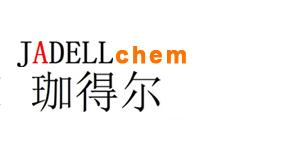Recombinant Human Angiopoietin-like Protein 3, His (HEK293-expressed) 在脂蛋白代谢中期重要作用。Angiopoietin-like Protein 3是脂蛋白脂肪酶 (LPL) 和内皮脂肪酶 (EL) 的双重抑制剂。Angiopoietin-like Protein 3抑制内皮脂肪酶水解HD-磷脂 (PL),从而提高HDL-PL水平
Synonyms
rHuAngiopoietin-like Protein 3, His; ANGPTL3; Angiopoietin-like Protein 3 ; 重组人血管生成素样蛋白3
Species
HumanSource
HEK 293 Accession
Q9Y5C1 Gene ID
27329 Molecular Weight
Approximately 30.0 kDa AA Sequence
SRIDQDNSSF DSLSPEPKSR FAMLDDVKIL ANGLLQLGHG LKDFVHKTKG QINDIFQKLN IFDQSFYDLS LQTSEIKEEE KELRRTTYKL QVKNEEVKNM SLELNSKLES LLEEKILLQQ KVKYLEEQLT NLIQNQPETP EHPEVTSLKT FVEKQDNSIK DLLQTVEDQY KQLNQQHSQI KEIENQLRRT SIQEPTEISL SSKPHHHHHH Biological Activity
Data is not available. Appearance
Lyophilized powder. Formulation
Lyophilized after extensive dialysis against PBS, pH 7.4. Endotoxin Level
<1 EU/μg, determined by LAL method. Reconstitution
Reconstitute the lyophilized recombinant Human Angiopoietin-like Protein 3, His (HEK293-expressed) (rHuAngiopoietin-like Protein 3, His) to 100 µg/mL using ddH2O or diluted with PBS. Storage & Stability
Lyophilized recombinant Human Angiopoietin-like Protein 3, His (HEK293-expressed) (rHuAngiopoietin-like Protein 3, His) is stored at -20°C. After reconstitution, it is stable at 4°C for 1 week or -20°C for longer. It is recommended to freeze aliquots at -20°C or -80°C for extended storage. Shipping
Room temperature in continental US; may vary elsewhere. Background
Angiopoietin-like proteins (ANGPTLs) represent a family of eight secreted glycoproteins that show structural homology to angiopoietins and carry distinct physiological functions, including putative roles in lipid metabolism, expansion of stem cells, inflammation, tissue remodeling and angiogenesis. In recent years, three ANGPTLs, ANGPTL3, ANGPTL4 and ANGP-TL8, have been shown to play a role in lipid metabolism and in the regulation of plasma lipid levels. The discovery of ANGPTL3 deficiency in mice and humans has stimulated a series of studies which have clarified the role of ANGPTL3 in lipoprotein metabolism. These investigations have suggested that ANGPTL3 may be a novel therapeutic target in the management of dyslipidemias in humans. The results of recent intervention trials aimed at inhibiting ANGPTL3 appear to support this hypothesis. |



